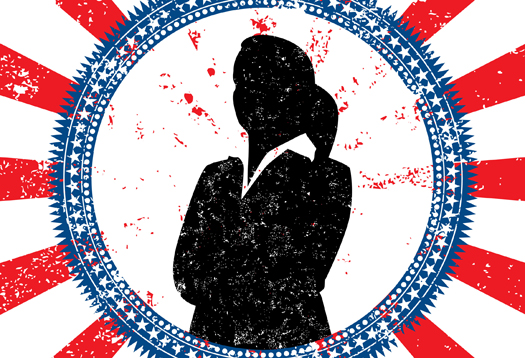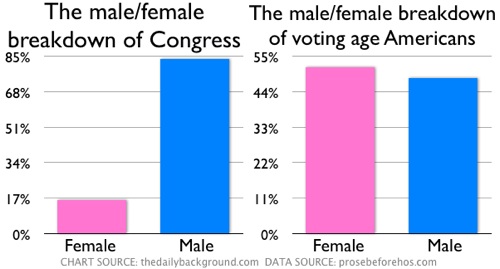Women in Congress, On the Decline?

2010 was a poor election year for women in Congress. Only one woman, New Hampshire Republican Kelly Ayotte, was elected to the Senate last election cycle, a year which also marked the first dip in female representation in the House since 1978.
Current numbers show a total of 90 women in Congress, with 17 women in the Senate, and 73 women in the House of Representatives. On average, women take up only about 16% of the seats in Congress, in any given year, despite the fact that women outnumber men in the general population.
For a complete breakdown of women in all elected positions, visit the CAWP’s Election Watch.
This year, the Center for American Women and Politics has launched what they call, “The 2012 Project”. The CWAP describes the project as, “A national, non-partisan campaign to increase the number of women in Congress and state legislatures.” The center denotes 2012 as an important year for women in politics because of low number of women elected during the last election cycle, and recent redistricting that has created new open seats which women have traditionally had success in winning.
According to a survey taken by the Inter-Parliamentary Union, the US ranks 78th internationally, in terms of number of women in political office. At the same time, while women make up 56% of voters, past elections show that women are not more likely to vote for female candidates. In 2008, Hillary Clinton, barely captured the majority of female voters.
The 2012 Project seems to be working so far. In a congress that has never seen more than 18% of its seats go to women, there are already a strong number of women running this year in hopes to increase that percentage. There are currently 23 women still in the running for Senate, with an additional 12 candidates who are still likely to file. In the House, there are currently 214 female candidates in the running, with another 59 likely candidates who have yet to file. Of these, there are 68 women running for open seats in 35 districts across the country.
For a more detailed analysis of women candidates in 2012 visit the CWAP’s Election Watch.
The year 1992 was dubbed, “The Year of the Woman” after four women were elected to the Senate, a number that has never since been surpassed. This year, as The 2012 Project hopes to produce a repeat of these numbers, female politicians from both sides of the isle have also been attempting to drum up more women candidates. From Sarah Palin to Nancy Pelosi, female politicians are actively encouraging women to enter into politics and run for office.
In terms of party preference, there have traditionally been more female democrats in Congress than female Republicans. Female Democrats currently outnumber female Republicans in the House, 48 to 24. In the senate the ratio is similar, with 12 female Democrats and 5 female Republicans.
Whether or not the efforts of The 2012 Project will yield more women in Congress has yet to be seen. This November it will become apparent if last year’s drop in female political participation in Congress will become a trend that will continue into future election years.






